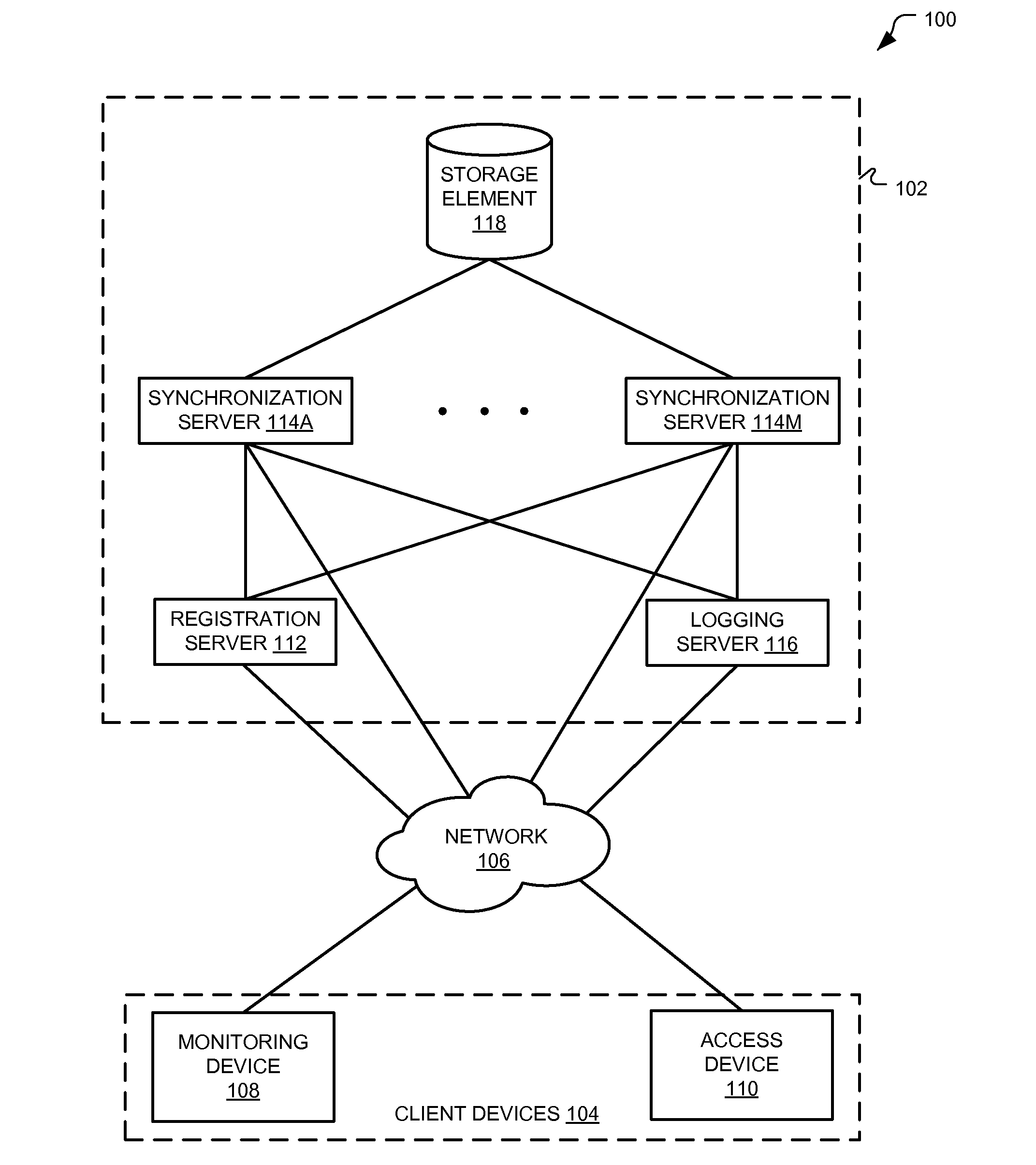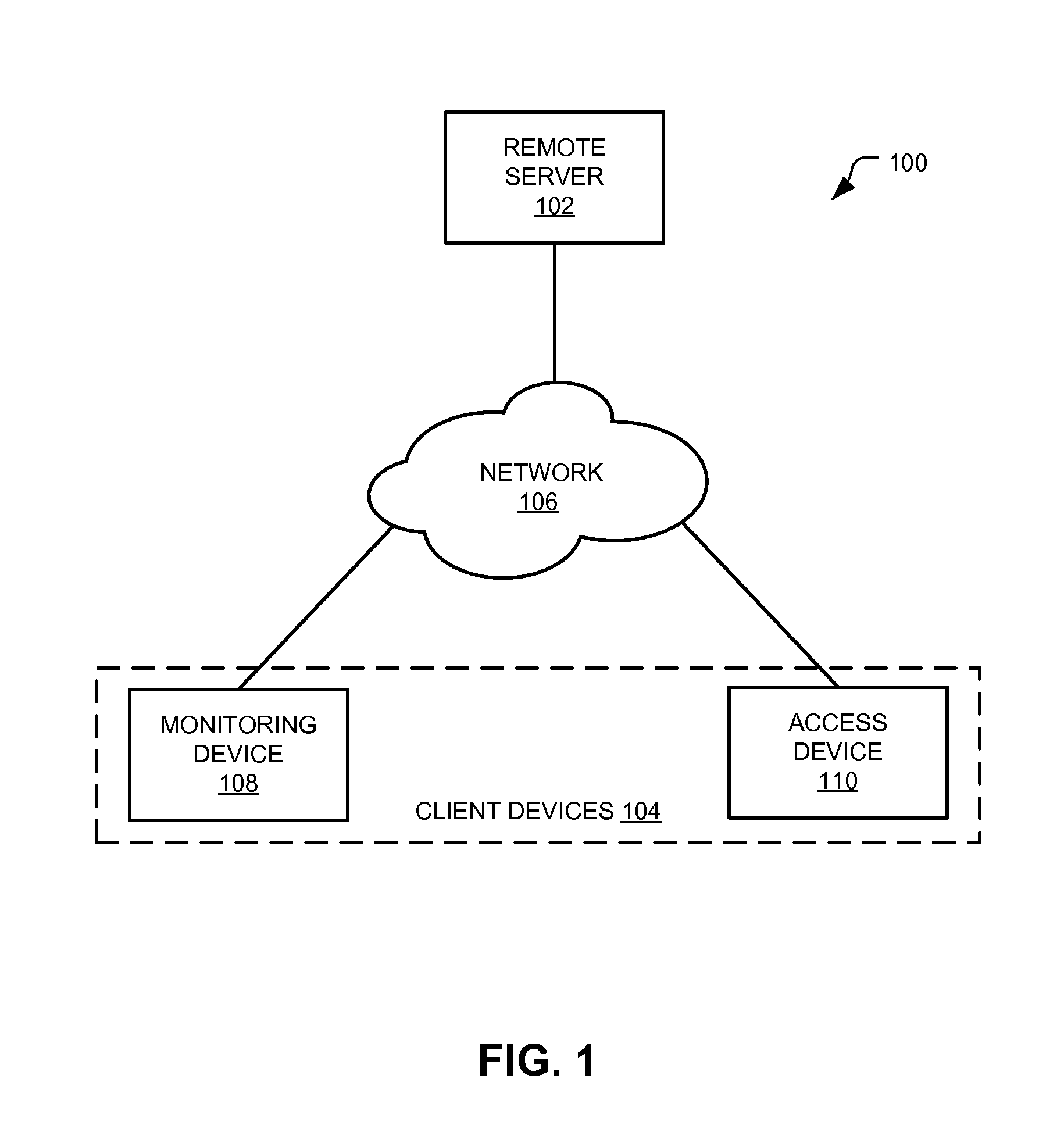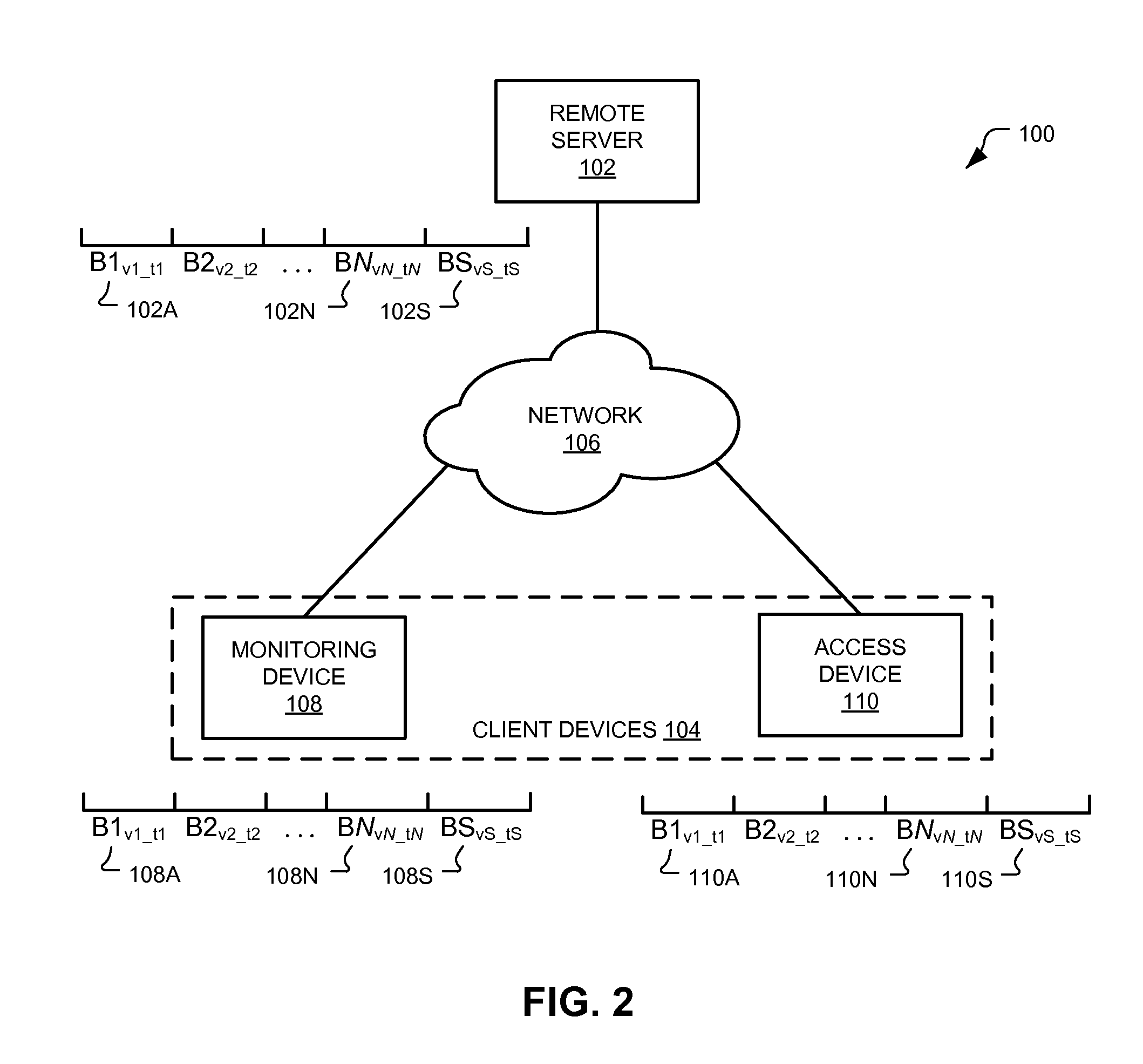Multi-Tiered Authentication Methods For Facilitating Communications Amongst Smart Home Devices and Cloud-Based Servers
a technology of multi-tier authentication and smart home devices, applied in digital data authentication, instruments, digital computers, etc., can solve problems such as substantial more challenges, and achieve the effect of minimizing power consumption and low power capacity
- Summary
- Abstract
- Description
- Claims
- Application Information
AI Technical Summary
Benefits of technology
Problems solved by technology
Method used
Image
Examples
first embodiment
[0262]FIG. 21C is a flowchart of a process 1420 for a synchronization server to receive a subscription request according to a In operation 1422, the synchronization server 114 receives a request to subscribe to relevant buckets from a client device 104. In operation 1424, the synchronization server 114 associates the relevant buckets (identified using, e.g., bucket identifiers included in the request) at the storage element 118 with the client device making the request (identified using, e.g., the device identifier). By making such an association, when changes are made to the relevant buckets at the storage element 118, those changes can be propagated to the appropriate client device.
[0263]In operation 1426 (which may be incorporated in implementations that use session identifiers), the synchronization server 114 associates the received session identifier with the relevant buckets. By making such an association, if subsequent changes to any of the relevant buckets are requested by ...
second embodiment
[0266]FIG. 21D is a flowchart of a process 1440 for a synchronization to receive a subscription request according to a Operations 1442 through 1446 are similar to operations 1422 through 1426, thus further description is omitted. In operation 1448, however, the synchronization server 114 determines whether the request includes timestamp and / or version information. If not, then processing continues to operation 1450, where the synchronization server 114 communicates the bucket contents, timestamp, and / or version identifier to the client device 104. The timestamp and / or version identifier may have previously been generated as a result of, e.g., operation 1324 or, e.g., operation 1364. Processing may then continue to operation 1454, where the synchronization server waits for changes to any of the subscribed buckets. If, however, in operation 1448 it is determined that the request includes timestamp and / or version information, then processing continues to operation 1452 where the synch...
third embodiment
[0421]Turning now to FIG. 28G, FIG. 28G is a flowchart of a process 1870 for determining whether or not the assigned credentials are valid according to a Like the embodiment described with reference to FIG. 28F, this embodiment may be applicable in cases where credential rotation is used and a new set of assigned credentials has recently been generated and communicated to the client device. Further, this embodiment may be applicable in cases where the secret portion of the credentials is stored in a hashed form at the front end servers (e.g., at registration server 112, synchronization server 114, and / or logging server 116) and (in some cases) the non-hashed form is stored in remote storage (e.g., storage element 118). In such cases, new challenges arise in that the synchronization server 114, having only stored the hashed version of assigned secret, generally cannot re-generate the assigned credentials to send back to the client device when the client device needs them. To re-gene...
PUM
 Login to View More
Login to View More Abstract
Description
Claims
Application Information
 Login to View More
Login to View More - R&D
- Intellectual Property
- Life Sciences
- Materials
- Tech Scout
- Unparalleled Data Quality
- Higher Quality Content
- 60% Fewer Hallucinations
Browse by: Latest US Patents, China's latest patents, Technical Efficacy Thesaurus, Application Domain, Technology Topic, Popular Technical Reports.
© 2025 PatSnap. All rights reserved.Legal|Privacy policy|Modern Slavery Act Transparency Statement|Sitemap|About US| Contact US: help@patsnap.com



